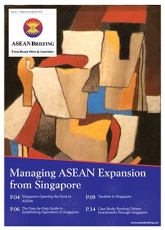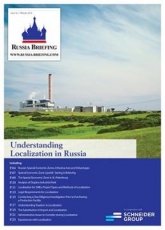Brexit Shows UK Has Turned its Trade Face Towards China, India & the East
With the United Kingdom voting to leave the European Union (EU) bloc, current media is having a field day promoting either the dreadful fate that awaits the country or celebrations of its newfound ‘freedom’. Neither camp – in or out – have yet provided a detailed breakdown of what can in fact be reasonably expected to happen. Yet having dealt for nearly 25 years with British investment in Asia – about 15 percent of our total clients at Dezan Shira & Associates have been from the UK, totaling an investment of about GBP200 million over that period – we have pedigree when it comes to assessing the mood for outbound and inbound investment coming from and into Britain.
First though, let’s examine the makeup of the EU, review its bilateral trade agreements, look at where some of the EU trade frustrations are, and the potential bilateral opportunities there for taking by the UK in light of the country leaving the EU.
European Union
Members: Austria, Belgium, Bulgaria, Croatia, Cyprus, Czech Republic, Denmark, Estonia, Finland, France, Germany, Greece, Hungary, Ireland, Italy, Latvia, Lithuania, Luxembourg, Malta, Netherlands, Poland, Portugal, Romania, Slovakia, Slovenia, Spain, Sweden, United Kingdom.
Micro States*: Andorra, Liechtenstein, Monaco, San Marino, Vatican City
Pending Membership: Albania, Macedonia, Montenegro, Serbia, Turkey
Potential Additional Members: Bosnia & Herzegovina, Kosovo
Membership Applications Frozen/Withdrawn: Greenland, Iceland, Norway, Switzerland
*Not officially part of the EU
Currently the EU consists of 28 sovereign member states (including the UK), with five pending and two being considered potential candidates. Other countries, such as Georgia and the Ukraine, have indicated membership would be a future aim.
Eurozone
Nineteen of the 28 member countries have adopted the Euro as their currency. These are: Austria, Belgium, Cyprus, Estonia, Finland, France, Germany, Greece, Ireland, Italy, Latvia, Lithuania, Luxembourg, Malta, the Netherlands, Portugal, Slovakia, Slovenia, and Spain.
European Union Free Trade Agreements
The EU has the following Free Trade Agreements (FTAs) either in place or under negotiation:
EU Bilateral FTAs: Chile, Colombia, Honduras, Mexico, Nicaragua, Panama, Peru, South Africa, South Korea
EU Bilateral FTAs (agreed to but not yet in force): Armenia, Costa Rica, El Salvador, Georgia, Guatemala, Moldova, Ukraine, Singapore
EU Economic Partnerships (agreed to but not yet in force): Cote d’Ivoire, Cameroon, Eastern African Community, Ghana, Southern African Development Community
EU Forthcoming Investment Protection Negotiations: China
EU Ongoing Trade Negotiations: Africa, Caribbean & Pacific (ACP) Countries, ASEAN, Canada, Gulf Co-Operation Council, India, Japan, Mercosur, Morocco, United States.
The EU itself recognizes that 90 percent of global demand will come from outside the EU over the next few years.
When such basic analysis is examined, it becomes clear that the EU has diverged significantly from being a “European” union, and appears to be morphing into something else. It now includes, or potentially includes, member states that are either not in Europe, and whose trade and political history have not been fully compatible or even embraced by Europe in the past. The case for Georgia, Ukraine, and Turkey becoming EU members is both historically and geographically odd, unless one wishes to redesign the boundaries of what “Europe” traditionally implied. That is not to say these nations are not upstanding members of the international community. But it is questionable as to the nature of their European claims. It is believed by many in Russia, for example, that the aim of the EU is to isolate the country. Certainly recent EU attitudes towards Moscow support this view, yet if true this was not the original aim of the Union. The EU development goals seem to have changed since the demise of the USSR.
Other changes and now divisions within the EU have also become apparent. Although both Germany and Greece are European, there is a huge difference in their wealth and economic positions. It has already been demonstrated that disparity within the EU has caused stress lines, and especially within the Eurozone itself.
Oxfam has issued reports showing that the economic disparity within the EU is increasing and tipping increasing numbers of Europeans into poverty, or risk of poverty.
More recently, the EU has adopted as members several countries that used to fall under the Soviet Union, and which developed along a completely different social and economic path from the end of WWII. These include the Soviet buffer states of Bulgaria, Czech Republic, Estonia, Hungary, Latvia, Lithuania, Romania, Slovakia, and Slovenia, all of which now have full EU membership status. What were the buffer nations of the USSR are now the buffer nations of the EU. The EU has incorporated a great deal of geographic land since its inception:
1959 – Founding of the EU: Six EU Members
1991 – Breakup of USSR: 12 Members
2016 – More than doubled to 28 member states, and reaching out further east.
While the aims and goals of these developments may well be admirable, it is clear that increasing the EU at the expense of the old Soviet Union has become a key development strategy. On the other hand, the recognition that in order to achieve an economically diverse and affluent region requires a reasonable amount of economic integration has not been realized. This disparity and an inability to prevent cross border migration has led to a huge flow of economic refugees from non-European countries. The EU is in fact in real danger of emulating the Soviet Union and breaking apart. The lack of a coherent economic strategy regarding EU membership parity, and the lack of meaningful security are proving intensely damaging.
A continuation of this strategy is not in the best interests of some of the larger EU member states. France, the EU’s third largest trading partner in terms of GDP, is also expressing considerable misgivings over this direction, as are others. It is noticeable that the UK is the EU’s second largest member, accounting for 17 percent of all EU trade and investment. The British public appear to have become so disenchanted with the EU that even they, as the second most powerful member, now wish to leave. It takes a huge amount of dissatisfaction to get to such a point; the EU itself never seems to have considered the threat of the UK exiting as a realistic possibility. Not understanding the political landscape within your own union demonstrates just how far the EU has become disengaged from its own member states.
![]() RELATED: Business Advisory Services from Dezan Shira & Associates
RELATED: Business Advisory Services from Dezan Shira & Associates
Political Governance
The EU has 751 elected members of parliament from its 28 member states. In comparison, the UK has 650. This means that the common British voter feels issues in the UK are much better represented in Britain, with an average of one MP per 100,000 people. In the EU, this translates as one MP per 676,431 citizens, suggesting the EU Parliament is seven times more distant from its citizens than the UK is – a problem for delivering governance in line with the wishes of the people and in terms of overall accountability.
Post-Brexit Opportunities for the United Kingdom
The EU itself appears to have lost its way in terms of clashing between defining the importance of furthering its geographic spread and developing internal security, internal economic compatibility, and external trade relations. It is clear there are several distinct agendas at play here, and they do not appear compatible or coordinated. At present, the desire to ‘claim land’ appears to have had the upper hand ever since the demise of the Soviet Union. This has effectively led to situations that the UK finds cumbersome to manage within the EU and better able to manage effectively on its own.
Financial Support
The UK was the world’s fifth largest economy in terms of GDP in 2015, according to the International Monetary Fund, producing goods and services with a value of US$2.849 trillion. The UK can certainly afford to leave the EU.
Bilateral Trade & Development
A noticeable failure of the EU to date has been its inability to successfully develop bilateral FTAs. In terms of negotiating these with major powers, this is the current status:
China
The EU has been in discussions with China over the framework of potential FTA negotiations since 2012. That’s just to agree on what to discuss. The onus is on trade and investment protection, rather than a full open market. The EU regards this period of over three years trying to work out what to talk about as ‘progress’. Meanwhile, their attention seems more diverted to dealing with Albania joining. With British trade with China valued at an annual US$70 billion and trade with Albania at US$25 million, it’s hardly surprising that the UK is unimpressed with the EU’s desire to accept more members and absorb more European territory and populations above a need to further develop trade agreements. Britain has a long history of bilateral trade and relations with China, and is home to a large Chinese diaspora. London is also the world’s second largest clearing house for the RMB after Hong Kong.
ASEAN
ASEAN was recognized as a ‘priority region’ in 2006, and negotiations concerning an ASEAN-EU FTA commenced in 2007. These have still not been concluded, with little progress being made since 2009. ASEAN comprises several countries with historic and trade ties with colonial Britain, including Brunei, Indonesia, Malaysia, Myanmar, Philippines and Singapore. Brunei, Malaysia, and Singapore are members of the British Commonwealth of Nations.
With Britain able to act faster than the EU in terms of negotiating trade deals, once again both historic ties and a faster bureaucracy could work in the UK’s favor in developing relations with ASEAN.
India
The EU commenced negotiations with India over an FTA back in 2007. To date, 13 rounds of discussions have been held with little progress. British relations with India date back centuries, as the country was the focal point of the British Empire. India is still a member of the British Commonwealth of Nations today. Bilateral trade between the UK and India has been growing, yet at US$12 billion per annum as of 2014, there is considerable room for growth. With a very strong Indian diaspora in the UK, developing a bilateral FTA directly with India is likely to be welcomed on both sides.
Greater Asia
Bangladesh, Maldives, Pakistan, Papua New Guinea, and Sri Lanka are all members of the British Commonwealth of Nations, as are Australia and New Zealand.
Russia and the CIS
UK relations with Russia took a nosedive in 2006 after the poisoning of Russian activist Alexander Litvinenko with Polonium 210, a highly radioactive substance that contaminated parts of London as well as a British Airways passenger jet from Moscow. Subsequent military actions in the Ukraine and Crimea have also been heavily criticized by London, even though the UK is well aware of the historical background. The famous “Charge of the Light Brigade” of British cavalry against Russian forces took place in Crimea in 1854. While relations may continue to be frosty, a UK free of having to follow EU sanctions may well take a more diplomatic tone with Moscow than has recently been the case. The Russian economy is weathering the sanctions imposed on it rather well, and is expected to move into positive growth next year, according to the European Bank of Reconstruction and Development. Meanwhile, the success of Russian sitcoms such as “Londongrad” demonstrate the palpable affection many Russians feel towards Britain.
Bilateral trade, despite the sanctions, is currently running at about US$20 billion, suggesting plenty of room for improvement in what is a US$1.6 trillion economy and among the top ten globally. Forging ties with Russia and picking up some of the trade the EU no longer wishes to engage with may be a surprise package, as could discussions concerning trade agreements with the CIS.
Summary
When examining the status of the EU, and especially post 1991, it becomes apparent that its main contemporary objective has been a land and population grab in the aftermath of the collapse of the Soviet Union. Out of the 28 current EU full member states, 11 of them are ex-Soviet satellites. In addition to this, formal and informal discussions have been taking place, principally involving Turkey, but also Georgia and Ukraine, about bringing these nations into the European community, effectively redrawing the traditional boundaries of what Europe actually represents. This has occurred without apparent attention to detail on either the massive disparity in economic wealth between EU nations and citizens within them, circumstances that have directly led to huge economic frictions, such as the situation involving Greece.
Coupled with this appears to have been an administration inept in handling negotiations with non-EU countries and trade blocs, despite an acknowledgement that demand for goods and services will be from outside the EU’s own borders. Free trade discussions with ASEAN and India have been ongoing for most of the past decade with little tangible progress, while discussions with China over the past four years have still not even been able to determine what the discussions should actually be about. These are obvious and serious failings, and when seen in this light, the desire of a nation such as the UK – steeped with international trading experience, and still a wealthy, productive nation in its own right – to exit the EU and instead look at taking on these challenges and opportunities outside the EU’s own orders on a bilateral basis starts to make strategic sense.
While there will undoubtedly be ramifications for the British economy in the short term concerning trade with the EU, British citizens have in effect voted for a rather more expansive, global trade outreach. With historic ties still in place since the long ago days of the British Empire, the significance of retaining institutions such as the Commonwealth of Nations may now come into sharp focus. In order to overcome losses caused by Brexit, the country will need to adapt its foreign policy, free of the shackles of what appears to be an extraordinary inability by Brussels to actually engage in anything other than expansionist goals, and recalibrate its economy by once again looking east. In terms of British trade engagement with China, ASEAN, India, and the rest of Asia – including Russia – the next few years are capable of delivering some spectacular results if handled properly.
|
Chris can be followed on Twitter at @CDE_Asia. Stay up to date with the latest business and investment trends in Asia by subscribing to our complimentary update service featuring news, commentary and regulatory insight.
|
![]()
 Selling, Sourcing and E-Commerce in China 2016 (First Edition)
Selling, Sourcing and E-Commerce in China 2016 (First Edition)
This guide, produced in collaboration with the experts at Dezan Shira & Associates, provides a comprehensive analysis of all these aspects of commerce in China. It discusses how foreign companies can best go about sourcing products from China; how foreign retailers can set up operations on the ground to sell directly to the country’s massive consumer class; and finally details how foreign enterprises can access China’s lucrative yet ostensibly complex e-commerce market.
 Managing ASEAN Expansion from Singapore
Managing ASEAN Expansion from Singapore
For the second issue of our ASEAN Briefing Magazine, we look at the benefits of using Singapore a hub for the management of regional operations throughout ASEAN. We firstly focus on the position of Singapore relative to its competitors, such as the Netherlands and Hong Kong. We then provide step-by-step instructions on corporate establishment, and provide expert insight on maximizing returns through the reduction respective tax burdens.
Importing and Exporting in India
In this issue of India Briefing Magazine, we examine India’s import and export landscape, basic import and export procedures, and customs duties. We note that India’s import-export figures have remained stable despite significant economic changes, summarize the steps that importers and exporters must follow in India, and provide an illustration that financial administration teams may examine to gain a rough estimate of potential duties calculations.
Understanding Localization in Russia
In this issue of Russia Briefing we discuss the advantages of localization in Russia for foreign companies, and provide an analysis of Russia’s industrial parks and Special Economic Zones (SEZs). We also feature an article from the General Director of ZENTIS Russia on their experience of producing jam, marmalade and other sweets in the country.
- Previous Article Missing the Mark: The Importance of Trademark Registration in China
- Next Article Up in Smoke: Why China has Banned Foreign Investment in the Tobacco Industry





























